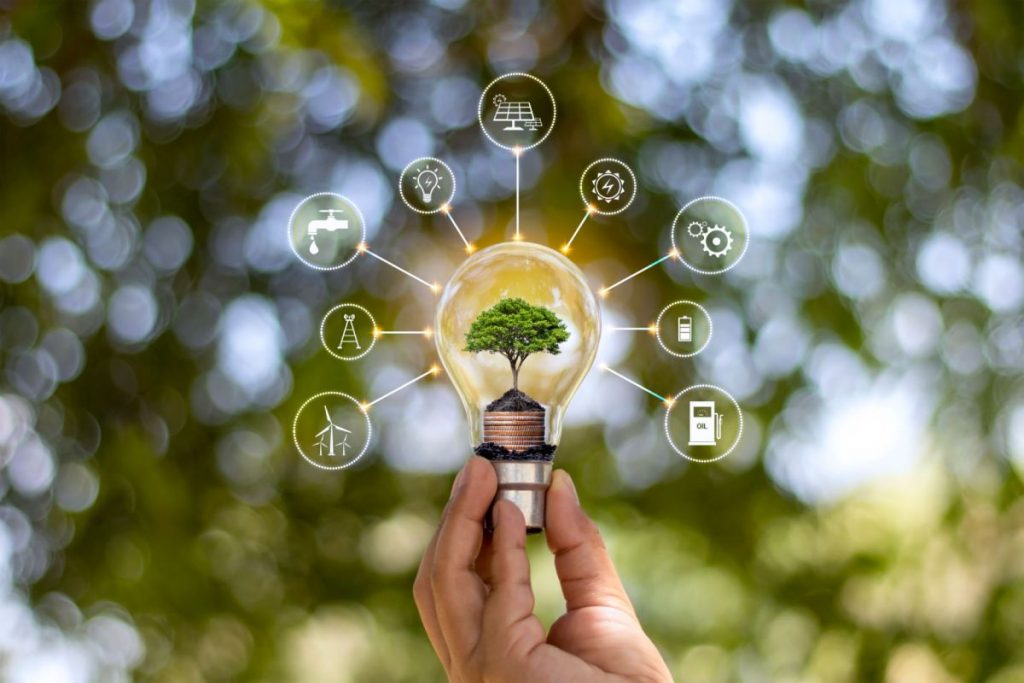Renewable, Green & Sustainable Energy: What is the Difference? – The world has been dependent on fossil fuel as its primary source of energy for many decades now. However, the process of converting fossil fuels into useable forms of energy creates a lot of pollution and harms the environment. On top of this, fossil fuels are limited and bound to run out one day. These features make fossil fuel an unsustainable form of energy. To serve as an alternative to this, sustainable energy sources have become a close competitor to fossil fuels and continue to be a popular choice for environmentally conscious individuals and businesses alike. Due to its increasing popularity, sustainable energy is known by many terms, and many subtypes can become a bit confusing for a non-specialist. In this blog, we shall look at some of the defining differences between renewable, green, and sustainable energy
Table of Contents
Sustainable Energy: Definition, Features and Examples
In simple terms, sustainable energy is the type of energy which can never deplete. Because of this reason, sustainable energy can stay a viable source for many generations. Some common examples of sustainable energy are solar and wind energy. Even with continuous use, humans can not deplete natural sources like sunlight or wind, which is used to generate electricity in this case; therefore, sustainable energy is replenishable. Any energy used to meet society’s demands without ever being depleted can be categorised as sustainable energy. One important thing to note here is that not all types of renewable energies can be environmentally beneficial. For example, large-scale hydropower has a damaging environmental impact since it affects marine life and causes deforestation.
Green Energy: Definition, Features and Examples
Green energy and renewable energy are sometimes used interchangeably, but there is a big difference between the two. While all types of green energies are renewable, not all types of renewable energy are completely green. We can take the previous example of hydropower here as well. Hydropower is a renewable form of energy, but it is not green or environmentally beneficial because of the large-scale deforestation it entails for dam building. Green energy is a subtype of renewable energy, but their environmental impact is a major difference between them. Green energy has the least number of negative effects on the environment. Examples of green energy are solar energy, wind energy and specific forms of biomass. In addition to being environmentally beneficial, green energies can be more affordable than fossil fuels. This subset of renewable energy has no carbon footprint. It can also improve the air and water quality and even help conserve many of our precious natural resources.
Renewable Energy: Definition, Features and Examples
Renewable energies are those which can renew themselves over a period of time, and they can never run out, unlike fossil fuels. This feature makes it a preferable source of energy for industrial usage. The types of energies falling under this category are hydropower, wind power, geothermal, biomass etc. Renewable energies can have an unfavourable effect on the environment. One small difference between renewable and sustainable energies is: Renewable energies are harvested from natural sources which can be replenished by themselves, such as crops and biomatter, whereas sustainable energy is harvested from sources that don’t need to be replenished because they will never run out, for example, sun and wind.
Making the Transition to Sustainable Energy
While there are subtle differences between green, renewable, and sustainable energy, they all represent the future of energy. All three of these are considerably better for the environment than traditional, fossil fuel-based energy. As the world moves towards a carbon-free future, it is the responsibility of individuals and businesses to transition to these forms of energy. Everyone should be motivated to utilise either one or a combination of all three forms of sustainable energy for their energy requirements.

